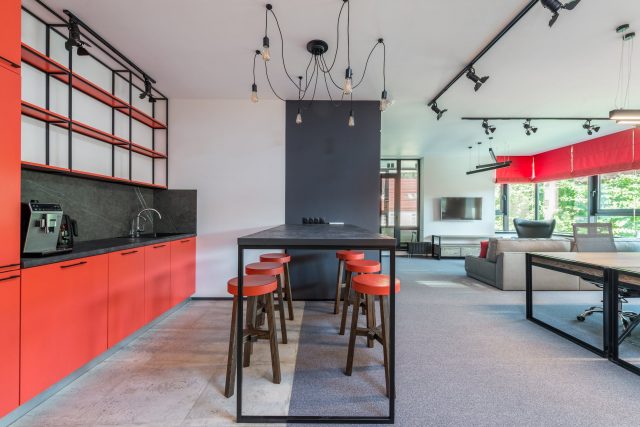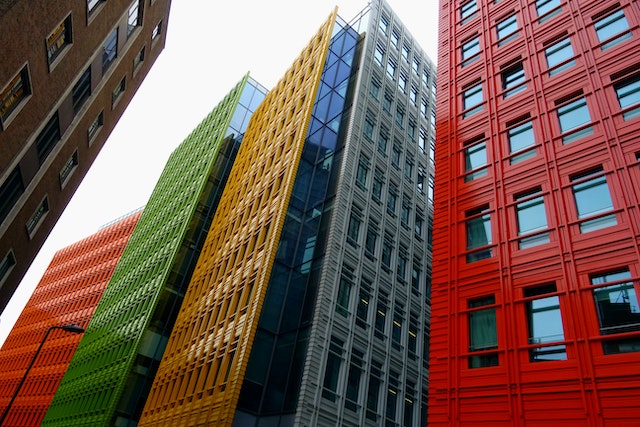September 17th, 2023

Mixed-use property refers to a type of development that combines elements of residential, commercial, cultural, institutional, or entertainment-based property into a single, cohesive unit. These properties are designed to foster a closer integration of different aspects of daily life, promoting convenience, and efficiency. By bringing together various functionalities, such as living spaces, office areas, retail, and entertainment venues, mixed-use properties embody a modern, holistic approach to urban planning.
The importance of mixed-use properties in the contemporary urban landscape cannot be understated. In the context of the United States, these developments serve as catalysts for community revitalization, facilitating social interaction, reducing commute times, and contributing to a more sustainable way of living. Economically, they also often provide property owners with an attractive investment opportunity with potentially higher returns, due to the diversified revenue streams they offer.
At the intersection of this modern real estate trend, Offices.net plays a vital role in connecting businesses and individuals with the perfect mixed-use commercial spaces. With a comprehensive listing of executive office suites, shared workspaces, flexible office spaces, and more, Offices.net makes the process of finding and moving into mixed-use commercial properties in the United States as straightforward as possible. Whether you are looking for a fully equipped, turn-key small office rental or a creative shared space, Offices.net’s free search tools can help you navigate through the options available online. Read the rest of this entry »
Tags: 2023, hudson yards, mixed use commercial property, mixed use property, Office Space, residential space, retail space
Posted in 2023, Business Districts, Mixed Use Property, Office Space Options Series | No Comments »
Add to: Del.icio.us | Digg
September 5th, 2023

Meetings are an essential aspect of corporate culture. It’s estimated that the average office worker in the US spends a third of their time in meetings, and the figures are even higher for executives and senior staff.
The widespread adoption of online communication tools has transformed the way meetings take place, prompting a debate between the merits of in-person and virtual meetings. In this article, we examine the pros and cons of in-person vs. online meetings and discuss why face-to-face interactions continue to have value.
Online meetings: Pros and Cons
In a relatively short period of time, virtual meetings have become the norm in most office-based companies. Data from 2022 shows that in just two years, the amount of time spent in virtual meetings had increased from 14 hours per week to more than 21 hours per week, matching or even exceeding the time spent in face-to-face meetings. There are several advantages and disadvantages to this virtual meeting format.
Read the rest of this entry »
Tags: 2023, Business Advice, communication, In-Person Meetings, Meetings, Office-tips, Video Conferencing, Virtual Meetings
Posted in 2023, Business Advice, Employment and Worklife, Meetings, Office Organization, Office Relations, Remote Workers, Technology, Trends and Statistics | No Comments »
Add to: Del.icio.us | Digg
August 21st, 2023

The rise of remote work has not only revolutionized the way businesses operate, but it has also had a profound impact on the lives of employees across the United States. Allowing workers to step out of traditional office settings, remote work has opened new horizons for achieving a better work-life balance. It has provided new opportunities for collaboration, efficiency, and productivity, regardless of physical location. However, with this transformation has come a wide spectrum of reactions and adaptations, driven in part by the generation to which workers belong.
Different generations have unique and diverse perspectives on remote work arrangements. The attitudes towards telecommuting and the challenges and benefits it presents vary widely between Baby Boomers, Millennials, and Gen Z workers. These differences aren’t merely superficial; they touch on deep-seated values, technological comfort levels, expectations, and the very definition of work itself.
Baby Boomers, who witnessed the advent of personal computing and the internet, have seen work evolve dramatically over the years, from strictly in-office to increasingly flexible arrangements. Millennials, often juggling multiple responsibilities and valuing work-life balance, see remote work as a tool for managing the complex interplay between their professional and personal lives. Meanwhile, Gen Z, the first generation to grow up fully immersed in a digital world, views doing work remotely as a natural extension of their connected lives, whilst also grappling with new challenges related to professional development and social integration.
These diverse perspectives can’t be understood in isolation. They must be seen in the context of rapid technological advancement, the job market, changing cultural norms, economic pressures, and evolving organizational structures. The impact of remote work is multifaceted, affecting everything from daily routines and communication preferences to career development and long-term job satisfaction.
Read the rest of this entry »
Tags: 2023, baby boomers, communication, gen z, millennials, remote work, statistics
Posted in 2023, Office Relations, Remote Workers | No Comments »
Add to: Del.icio.us | Digg
July 10th, 2023

Millennials and Gen Z professionals are now the largest demographic in the world of work, so it goes without saying that their views and expectations will have an impact on different corporate practices. Among these practices are issues of corporate social responsibility (CSR) and environmental sustainability, two of the hottest topics in the 21st century business world.
In this article, we will look at how both Millennial & Gen Z professionals are shaping corporate social responsibility and sustainability practices in office-based workplaces across the United States.
Seven Ways Millennials & Gen Z are Shaping CSR and Sustainability Practices
Purpose-Driven Workplaces
One of the things that characterizes the new generation of professionals is their understanding of the workplace as more than just “a place to work”. Although financial considerations still matter, Millennials and Gen Z workers expect more than just a paycheck: they want their work to have a purpose.
For this generation, being purposeful at work equals success, matching or even in some cases exceeding the feeling of satisfaction that comes from financial gain. In fact, many Millennials would be willing to take a pay cut if their work resonates with their values.
Read the rest of this entry »
Tags: 2023, corporate social responsibility, CSR, sustainability
Posted in 2023, CSR, Office Relations | No Comments »
Add to: Del.icio.us | Digg
May 29th, 2023
The concept of walkability is becoming increasingly discussed in urban planning and design environments, as it impacts well-being, health, livability, and real estate economics. In this article, we discuss the walkability trend in relation to the office market, and explore its benefits, as well as the amenities, data, and calculations used to generate a property’s walking score.

About the concept
In the United States, walking scores for real estate were first published by WalkScore, a company developed in the mid 2000s by former Microsoft developers that understood the importance of walkability and its connection to quality of life.
These WalkScore founders developed a tech-supported system that generated walkability scores for any given postcode. The overall score shows how easy and convenient it’s to live or work in a location without needing to drive or use mass transit.
Initially, walking scores were one of the criteria used to choose a residential property, but eventually they were applied to all kinds of real estate, including offices. Nowadays, it’s common to see walkability scores displayed in real estate listings. As time went by and people became more familiar with the importance of walkability and its connection to real estate, different walkability tools and calculators appeared in the market.
How do walking scores affect real estate economics?
There’s a strong correlation between walkability and commercial real estate economics. Researchers analyzed property price trends over a decade and uncovered wide gaps in price increases between highly walkable CBD real estate (which experienced 125% price increases) and those in car-dependent areas, where prices only rose by 20%.
Read the rest of this entry »
Tags: 2023, benefits, walk score
Posted in 2023, Office Health | No Comments »
Add to: Del.icio.us | Digg
May 15th, 2023
A return to the office is a reality in most US markets, but in 2023 work-from-home models are still common, since 27% of US office employees currently work from home. Not only that, but when surveyed, nearly 70% of US employees said they would prefer to work from home.
This raises an important issue for office facility managers: how to make in-person office work as attractive as the allure of the home office. In turn, this brings landlords into the equation, as they need to make their real estate offerings more competitive in a market where tenant demands have changed. In this article, we discuss the latest trends in office facilities and the best office amenities that can be found in 2023.

Latest trends in office facilities
Outdoor space
Although office work has traditionally been confined to indoor spaces, the renewed focus on air quality and overall well-being during the pandemic has brought to light the crucial role outdoor spaces play in modern corporate buildings. Research shows that access to nature and outdoor environments can improve productivity, reduce stress, and enhance creativity among employees.
Patios, rooftop decks, landscaped terraces, and other outdoor areas are rapidly becoming some of the most sought-after amenities for office workers. These physical spaces not only provide a breath of fresh air and an escape from the indoor office environment, but also foster social interactions and collaboration among employees, creating a healthier and more dynamic workplace culture.
Read the rest of this entry »
Tags: 2023, biophilic design, building facilities, de-densification, office amenities, office facilities, outdoor space
Posted in 2023, Business Advice, Office Amenities | No Comments »
Add to: Del.icio.us | Digg
May 1st, 2023
Commercial real estate costs have been increasing in most US urban markets for a while, which has highlighted the need to be strategic about new office space investments.
For this reason, office-based businesses are rethinking their space allocation after making changes to work models and switching to hybrid or remote work.
Planning the optimal use of office space is a smart move. Not only can this help reduce costs, but it also ensures employees work in a more pleasant environment that is conducive to productivity and well-being. This means that office space planners are in high demand, however, not every company has the luxury of having an employee that is up-to-date on office space planning guidelines.
In this article, we look at 12 ways in which US businesses can optimize their office space planning. If you are looking to polish up on office space planning basics, then read on to find out more!

Read the rest of this entry »
Tags: 2023, flexible office space, office space planning, tips and tricks
Posted in 2023, Office Organization, Office Planning | No Comments »
Add to: Del.icio.us | Digg
January 31st, 2023

The use of color in an office space has a significant impact on the atmosphere of the workplace and on those that occupy it. The right combination of colors can enhance the overall design, improve the functionality of the space, and create a more positive and productive work environment.
According to the Institute for Color Research, within 90 seconds of first viewing, people make a subconscious judgement about a space or a product, and between 62% and 90% of that evaluation is based only on color. Additionally, in a ground-breaking study, the University of Texas discovered that when presented with different colors, varying brain responses can affect employee productivity and attitude.
In this article, we will discuss the power of color in offices by delving into the evidence surrounding color psychology, and the impact lighting and materials have on color, and how this should combine to be applied to office design. So, after reading, office interior designers, occupiers and landlords should gain some insight into how to use color to enhance the overall design of spaces, and improve the functionality and productivity of the office environment.
Read the rest of this entry »
Tags: 2023, Business, Business Advice, commercial property, Commercial Real Estate, Office Health, Office Organization, Office Space, Office-tips
Posted in Office Health, Office Renovation | No Comments »
Add to: Del.icio.us | Digg







